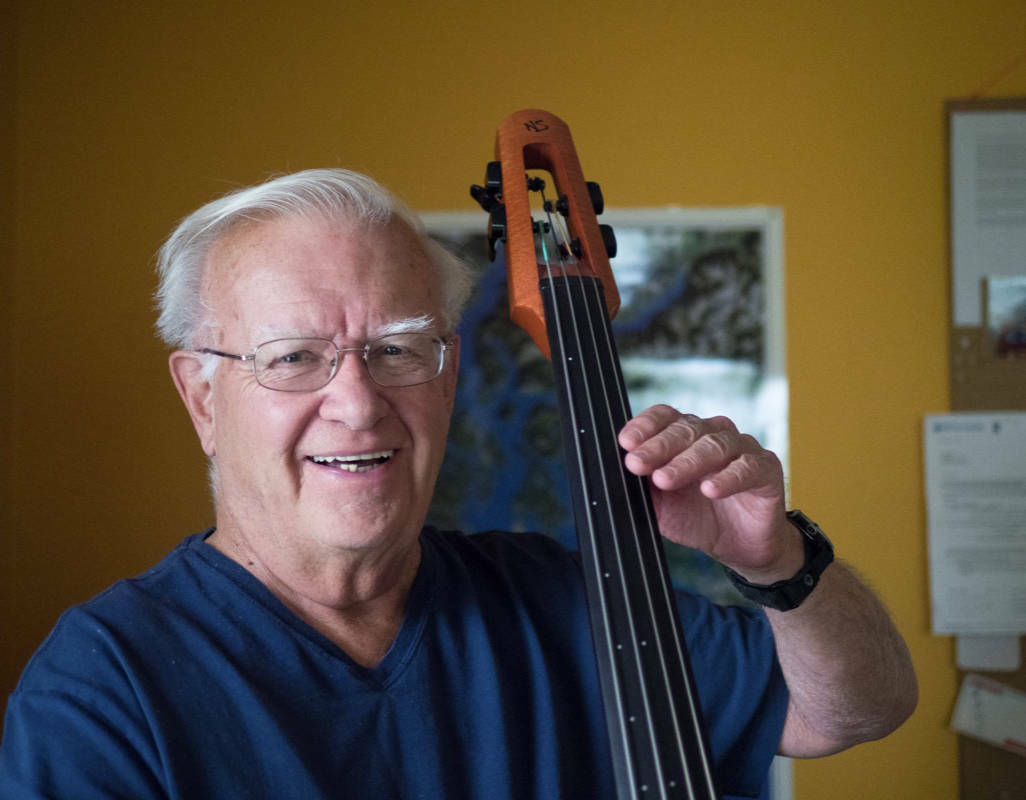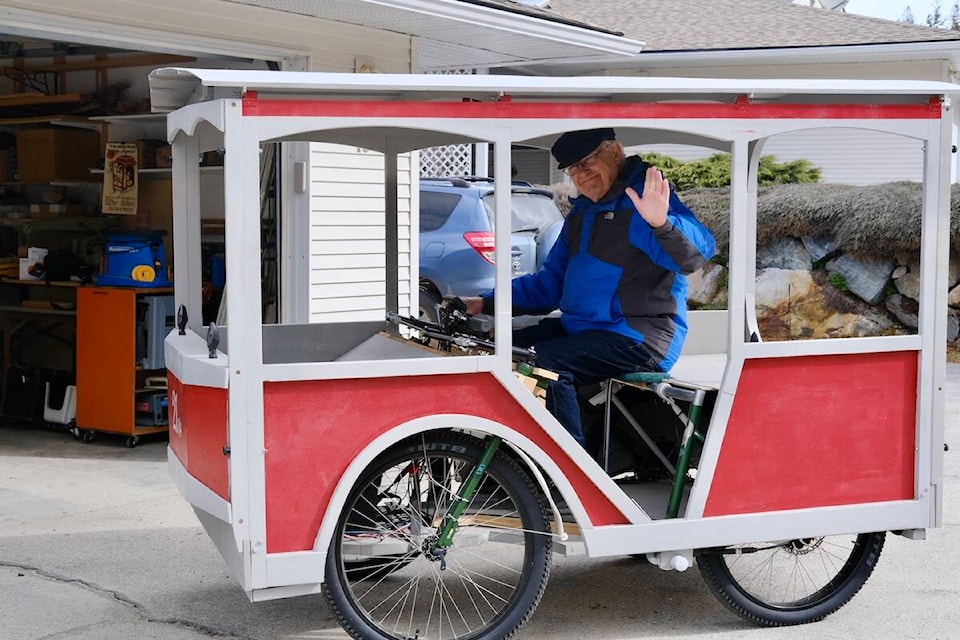At age 83, Bruce Hunter of Nelson modestly relishes the idea that he is ahead of his time.
Before electric bikes became popular, he retrofitted his regular bicycle with a small electric motor.
He’s not waiting for a manufacturer in a big city to build a small, lightweight, low-cost electric car made out of electric bicycle parts that could be used for such things as grocery shopping, meals on wheels, take-out deliveries, and mail-order parcels.
Hunter has done it himself, in the garage at his condo. He proudly states that all of the materials and components for what he calls the Nelectricar were bought in Nelson or sourced from Vancouver by Nelson suppliers.
“I’ve always built stuff,†the says. “I’m a tinkerer. Even the fenders on this car are made of plastic pipe straightened out.â€
The Nelectricar is made of the wheels and handlebars from an electric bike, with two hub motors, its own charger, a 50-volt battery, and room for groceries.
It has regenerative power and can be charged overnight on a regular wall plug.
“It’s basically a wooden deck between the wheels, with an exterior easily-replaceable wood shell,†he says, pointing out that he made the current shell to resemble the historic Streetcar 23 that travelled Nelson streets until 1949 and now carries tourists and local families along the Nelson waterfront.
Hunter has been an electric streetcar fan since his role as music director in a 1986 musical theatre production of I Always Wanted to Ride a Streetcar at the Civic Theatre in Nelson.
Since then he has been thinking about, and waiting for, electric vehicles. He’s also inspired by the fact that the first electric power generated in B.C. was in Nelson in 1896 at Cottonwood Falls.
Hunter says his car is a prototype, not a finished product. It does not have enough power to convey him from downtown to his house at the top of Mill Street, only making it as far as the hospital.
To remedy this, he intends to give the 26-inch wheels more torque by replacing them with smaller ones, and he’s considering putting hub motors on the front wheels in addition to the rear.
Hunter says the car could be driven legally on city streets, but he has not yet asked city hall or the province about licensing requirements. He adds that he still has to add some safety features such as turn signals.

To move the Nelectricar from a work in progress to a marketable Nelectricar 2.0, Hunter is looking for development grants or investments, along with a small group of people with knowledge of business and manufacturing.
But his thinking is small town and human scale, not industrial.
“It could be built and tested in a year and a half, in a small space, by two or three artisans experienced in wood, metal, and general tinkering,†Hunter says.
He envisions a small centre perhaps in downtown Nelson where the final assembly of the cars is done according to exacting standards, but with components, designs and innovations coming in from a network of woodworkers, metalworkers, designers, and other artisans, builders and technologists around the region.
The day Hunter first drove the Nelectricar down Baker Street last summer, he felt many things.
“Vulnerable, exhilarated, all my senses quickened, anticipation. Vulnerability because I’m a quiet little wooden vehicle with no bumpers. I also felt a sense of accomplishment at being able to do the improbable. I allowed myself to feel a little pride, knowing that it often comes before the fall.
“Driving that little car down the street makes me feel even more confidence than I would feel on a bike or scooter. My car belongs on the street, not the Rail Trail or the sidewalk or Lakeside Park walkway.â€
Related:
•
•
•
bill.metcalfe@nelsonstar.com
Like us on and follow us on



